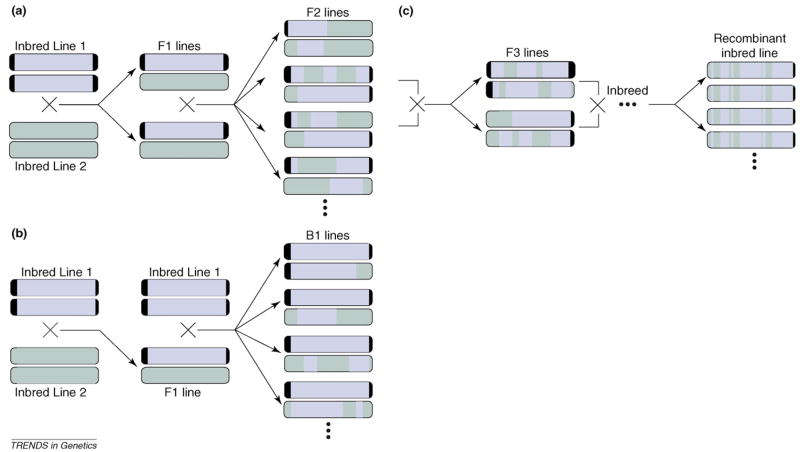Figure 2.
Breeding designs commonly used in model organism expression quantitative trait loci (eQTL) studies. The original inbred lines are shaded in different colors to track transmission of segments from one pair of homologous chromosomes. However, as inbred lines 1 and 2 undoubtedly are not polymorphic for many alleles, the actual genotypes at many marker loci on the grey and black chromosomes will be the same. (a) F2 design. Two inbred lines are crossed to form a heterozygous but identical F1 generation. These F1 individuals are then crossed to form an F2 generation. (b) Backcross design. Two inbred lines are crossed to form an F1 generation. F1 individuals are then backcrossed to one of the inbred parents to form a B1 generation. (c) Recombinant inbred lines. Inbreeding from the F2 generation on eventually results in near homozygous individuals with a mixture of markers from the original inbred lines. One such line is depicted starting from a brother-sister pair of F2 individuals. Different recombinant lines can be created by crossing different brother-sister pairs.

